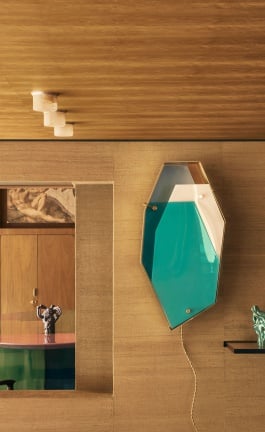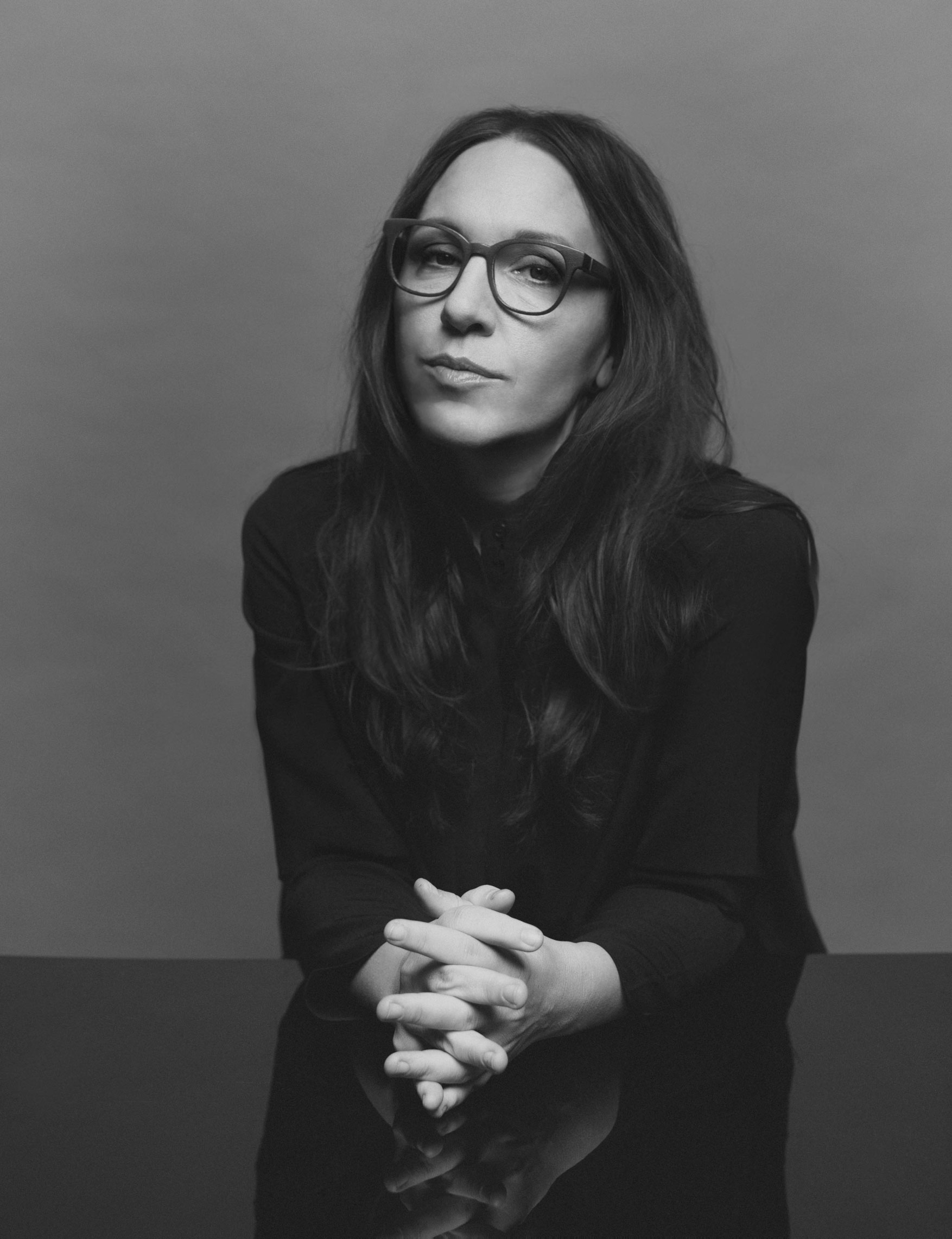
Hanna Nova Beatrice, Director of Stockholm Furniture Fair and Stockholm Design Week. Photo by Jasmin Storch.
As Hanna Nova Beatrice confides: “I inherited the exhibition layout from the previous edition, the first, dramatic, post-Covid exhibition. While maintaining the traditional setup, me and my team created a brand-new layout with a focus on storytelling in an attempt to enrich perspectives with talks, themed exhibitions and new players. Along with household Swedish brands such as Lammhulths, Massproductions, Ogeborg, Wästberg and Vaarnii, I wanted to include entities that embody a different vision of Scandinavian design”.
Examples of the latter include Edsbyn, a Swedish brand established in 1899 which has since relaunched through collaborations with CKR and Luca Nichetto, Hem, an independent design brand and platform founded by Petrus Palmér that collaborates with vanguard designers such as Soft Baroque, Marco Campardo and Faye Toogood, and South Korean furniture brand Wekino who presented a collection by six Korean design studios in collaboration with Stockholm-based Note Design Studio. “The guiding idea”, Hanna explains, “was to map this new Scandinavian wave tailored for millennials. I would have liked greater participation, but I am still satisfied. We have sown the seeds of rebirth.”
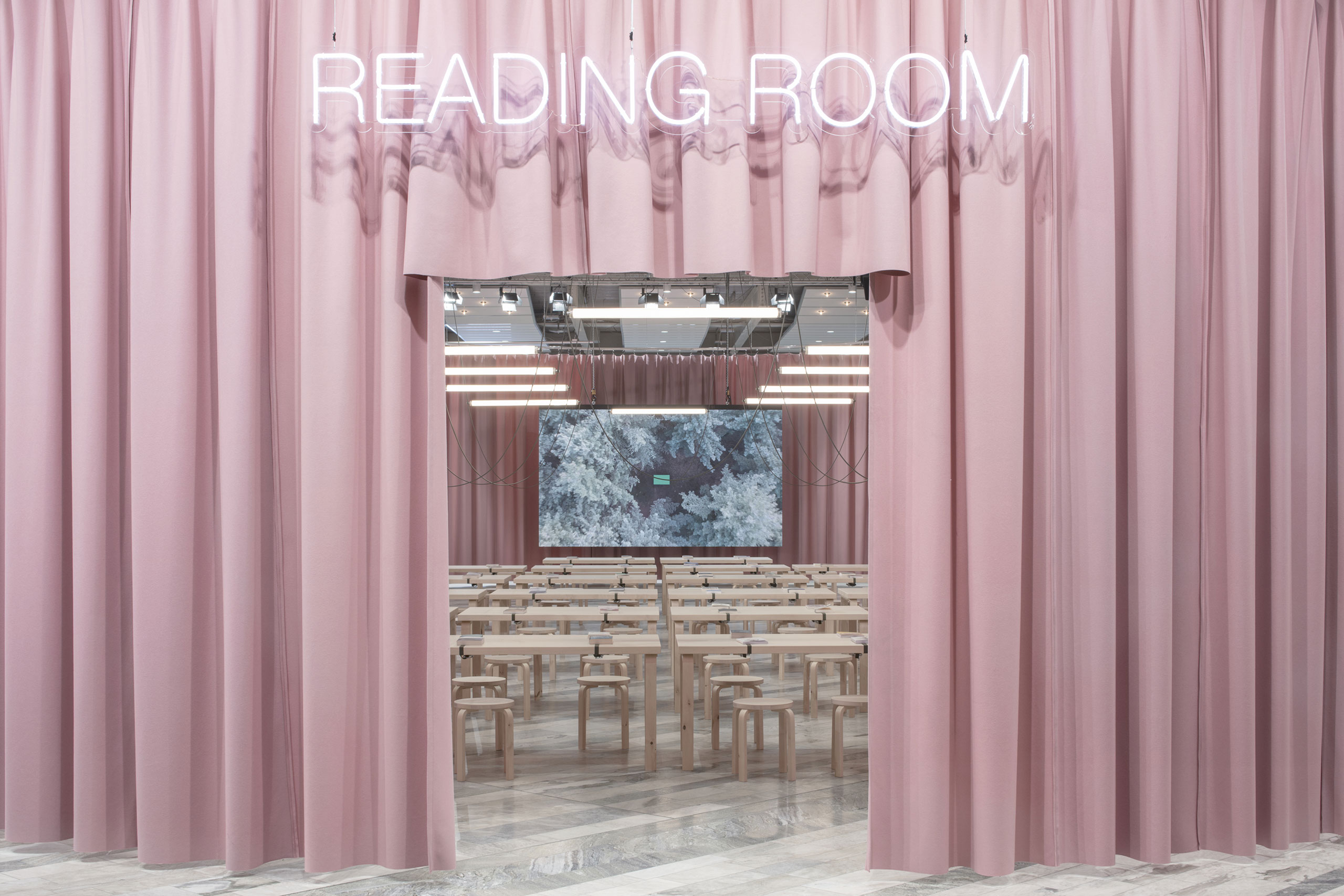
Reading Room by research-based design studio Formafantasma and Guest of Honor at Stockholm Furniture Fair 2024. Photography © Maharam.
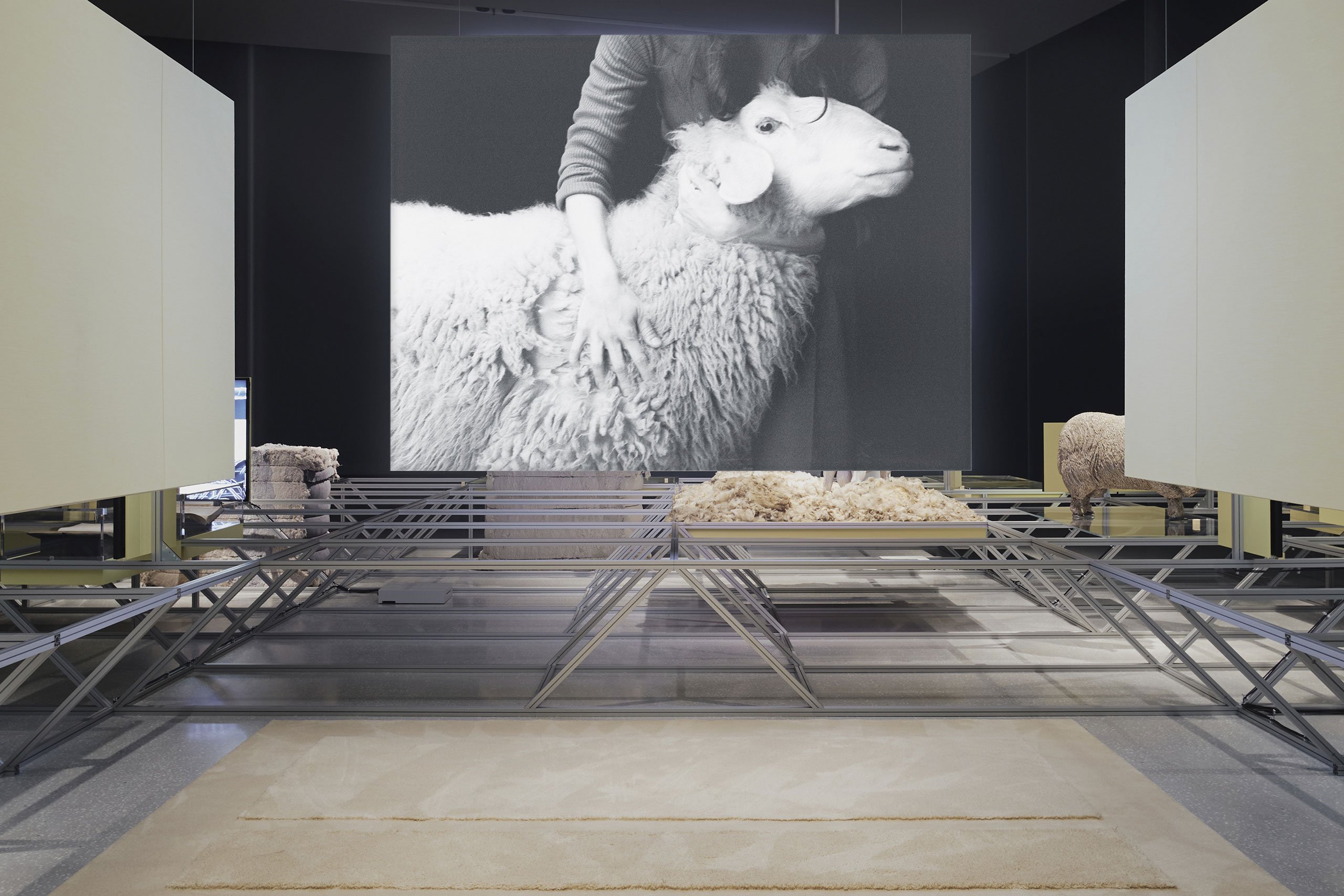
Oltre Terra is an ongoing investigation conducted by Formafantasma focused on the history, ecology, and global dynamics of the extraction and production of wool. Commissioned by the National Museum of Oslo, and curated by Hanne Eide. Photgraphy © Gregorio Gonella.
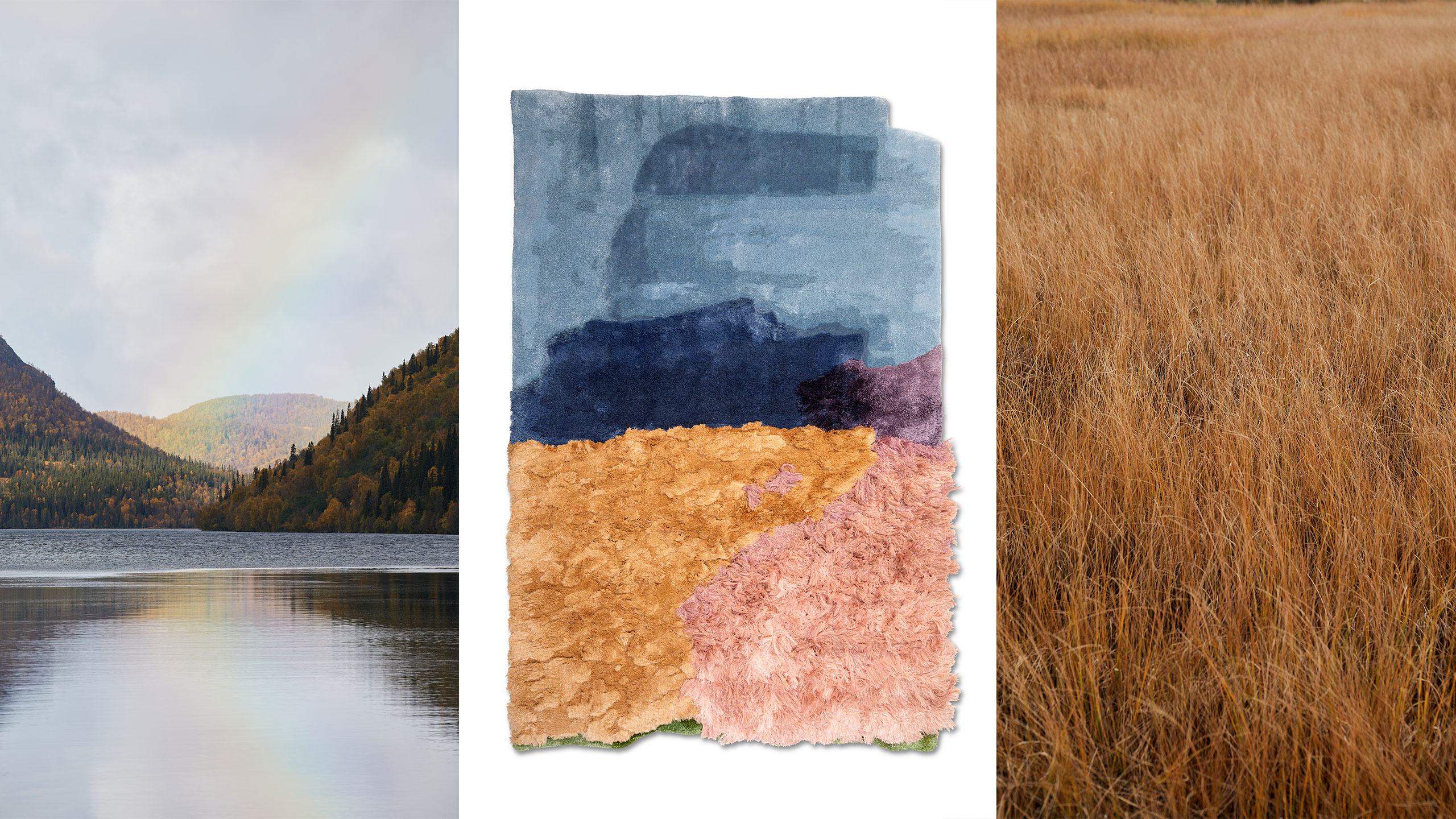
The mountains (floor) rug by Ogeborg Design Collection. Hand tufted in variable heights 14–100 mm, 2.00 x 3.00 m.
Yarn: Siri; thin wool, Aster and Astro; viscose from sustainably cultivated eucalyptus.
Design: Monica Förster Design Studio
Creative Director: Monica Förster
Team: Harald Sundberg, Johanna Fosselius, Aleks Rasztawicki.
Photography © Osman Tahir and Jan Landfeldt, United Frog Studios.
With the number of exhibitors dropping from 480 in 2023 to 270 this year, Hanna tried to fill the space, both physically and figuratively, by shifting the focus of inquiry. “The protagonists of the space are the companies that have rethought the production process: These are entities that cover the entire wood production chain, from the plant to the table. They produce the material, cut it, and make furniture starting from the forest, which they often own themselves.” Case in point, Monica Förster whose “I inherited a Forest” wool and eucalyptus fiber rug collection for Ogeborg was designed in in memory of her father, from whom she inherited a forest in Lapland.
More and more companies and startups in Sweden are acquiring forested land to experiment with circular business forms. Take Verk for example, a super-local brand founded three years ago that only uses locally sourced materials: from the trees through to the finished chair, everything is made in Sweden. This isn’t about the brand’s image, but more about having control over all stages of the supply chain making disposal and recovery easier.
The concept of brands owning a 'design forest' remains a distant reality, not because of a shortage of raw materials, but due to perceptions around Swedish wood, like pine and oak, which are traditionally favoured for architecture rather than furniture due to their aesthetic qualities. Therefore, it's crucial for trade fairs to challenge and shift the industry's mindset. This cultural shift represents a move towards design subversion, emphasizing identity over political issues. It's about moving from a consumerist design approach to one where design thinking fosters economic growth through sustainable, non-extractive practices. By starting with a focus on local resources and a nurturing approach, there's a potential for a genuine renewal within the ethos of true sustainability. This suggests that Sweden may be embarking on a new, more radical trajectory in design.
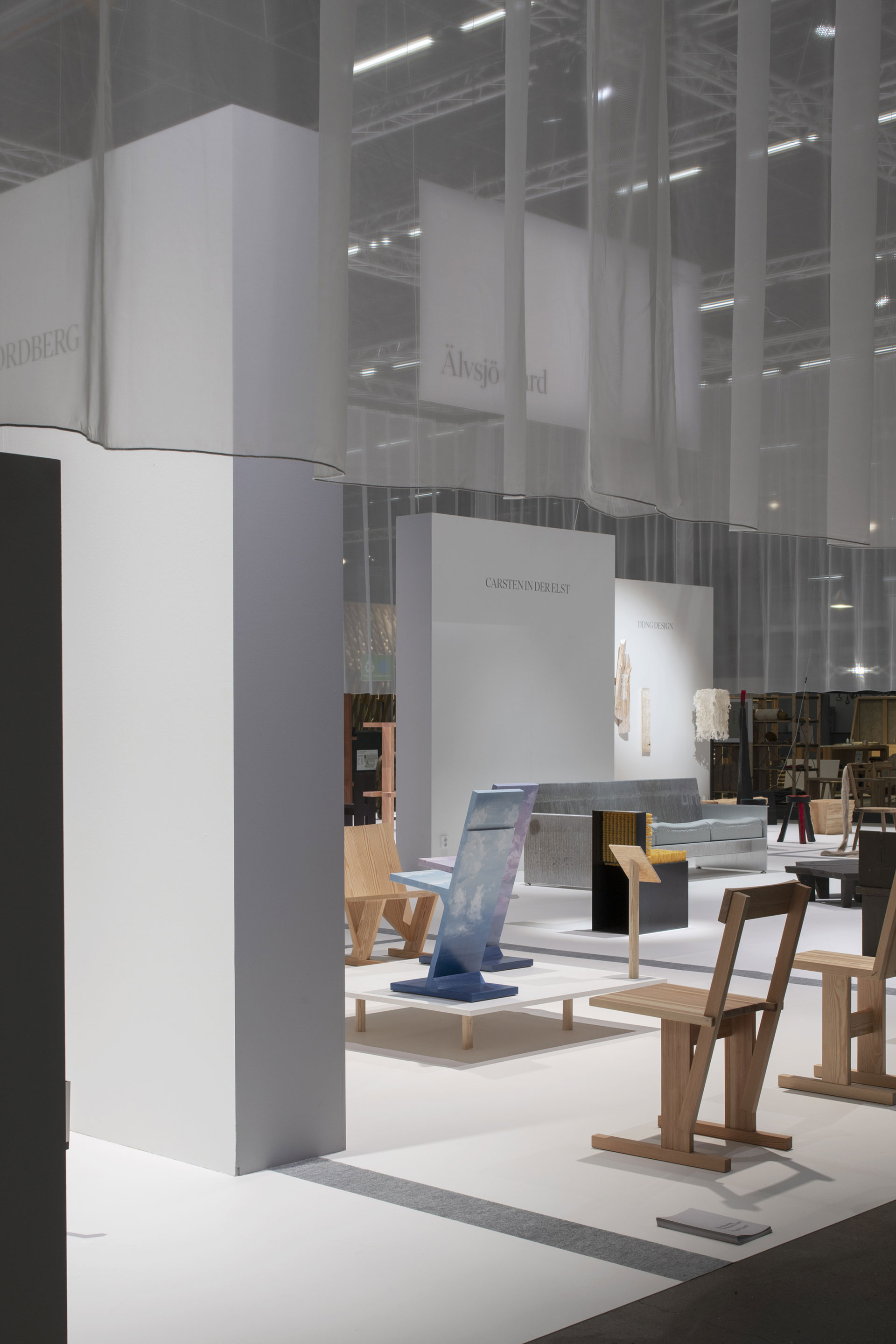
Älvsjö Gård displays innovative and unique pieces from designers and creators who bridge the gap between artisanal craftsmanship and industrial design. Photography © Stockholm Furniture Fair, 2024.
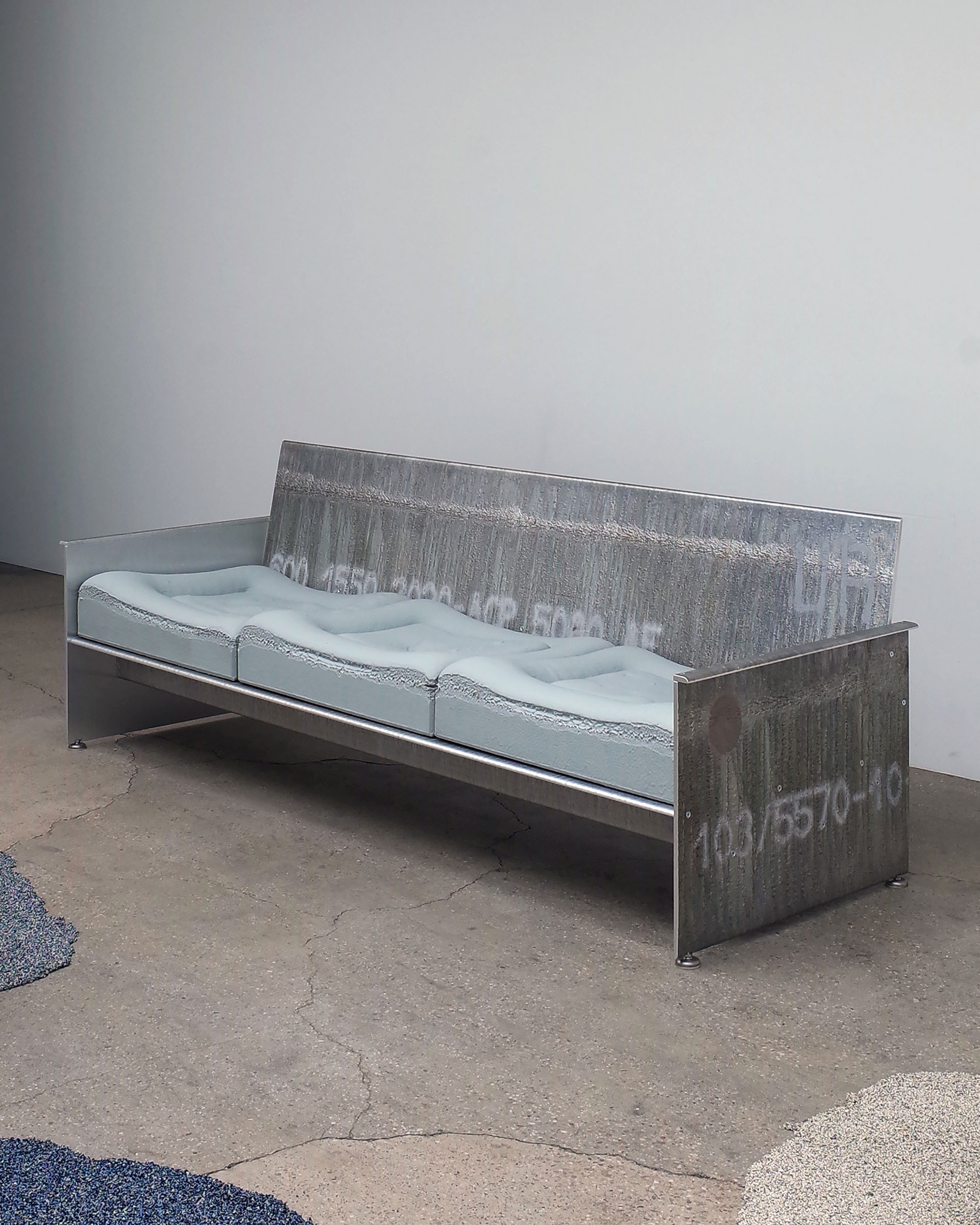
Aluskin sofa by Studio in der Elst at Älvsjö Gård exhibition. Photography © Stockholm Furniture Fair,2024.
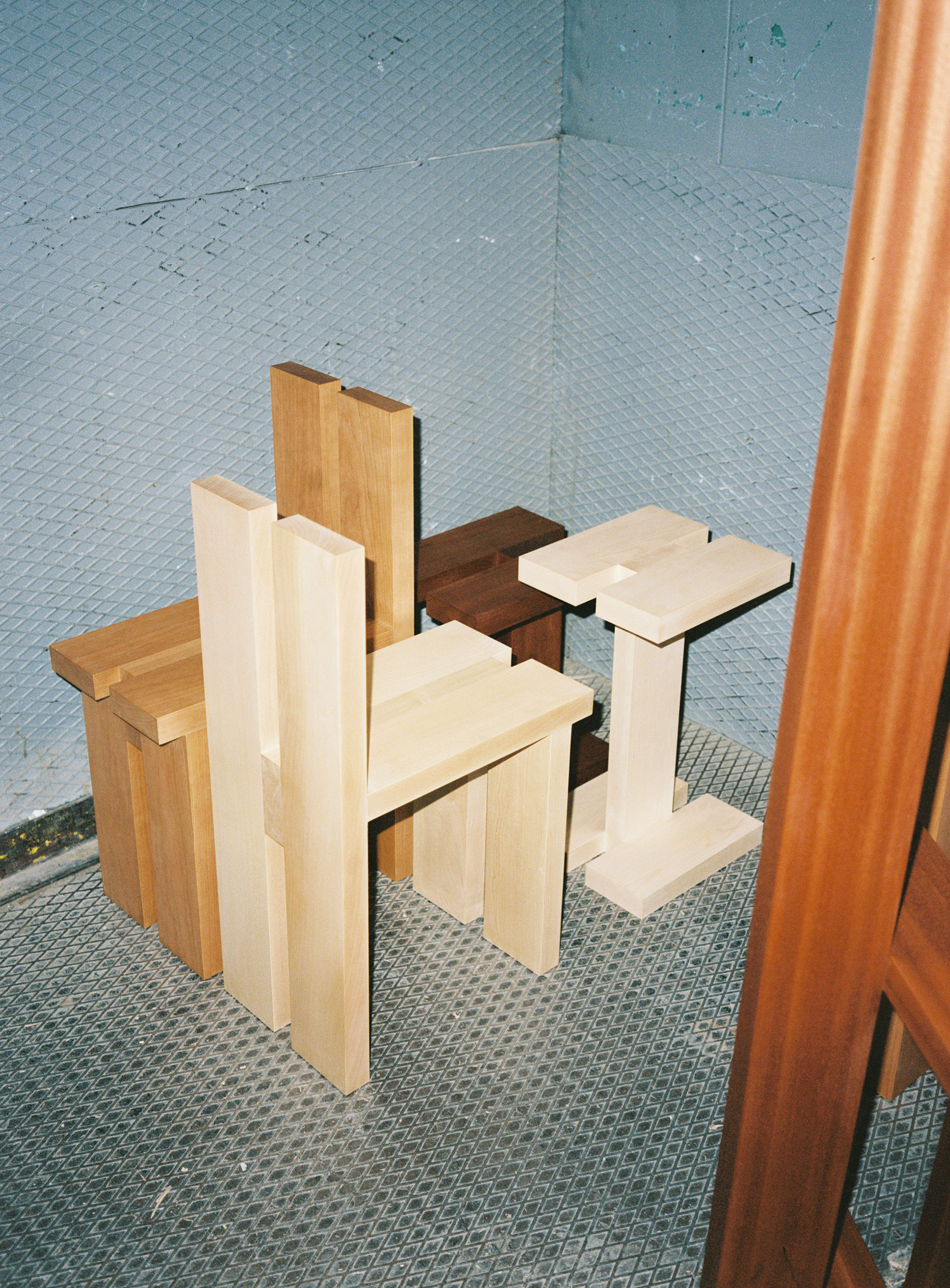
Primitive Arrangements by Nick Ross at Älvsjö Gård exhibition. Photography © Stockholm Furniture Fair,2024.
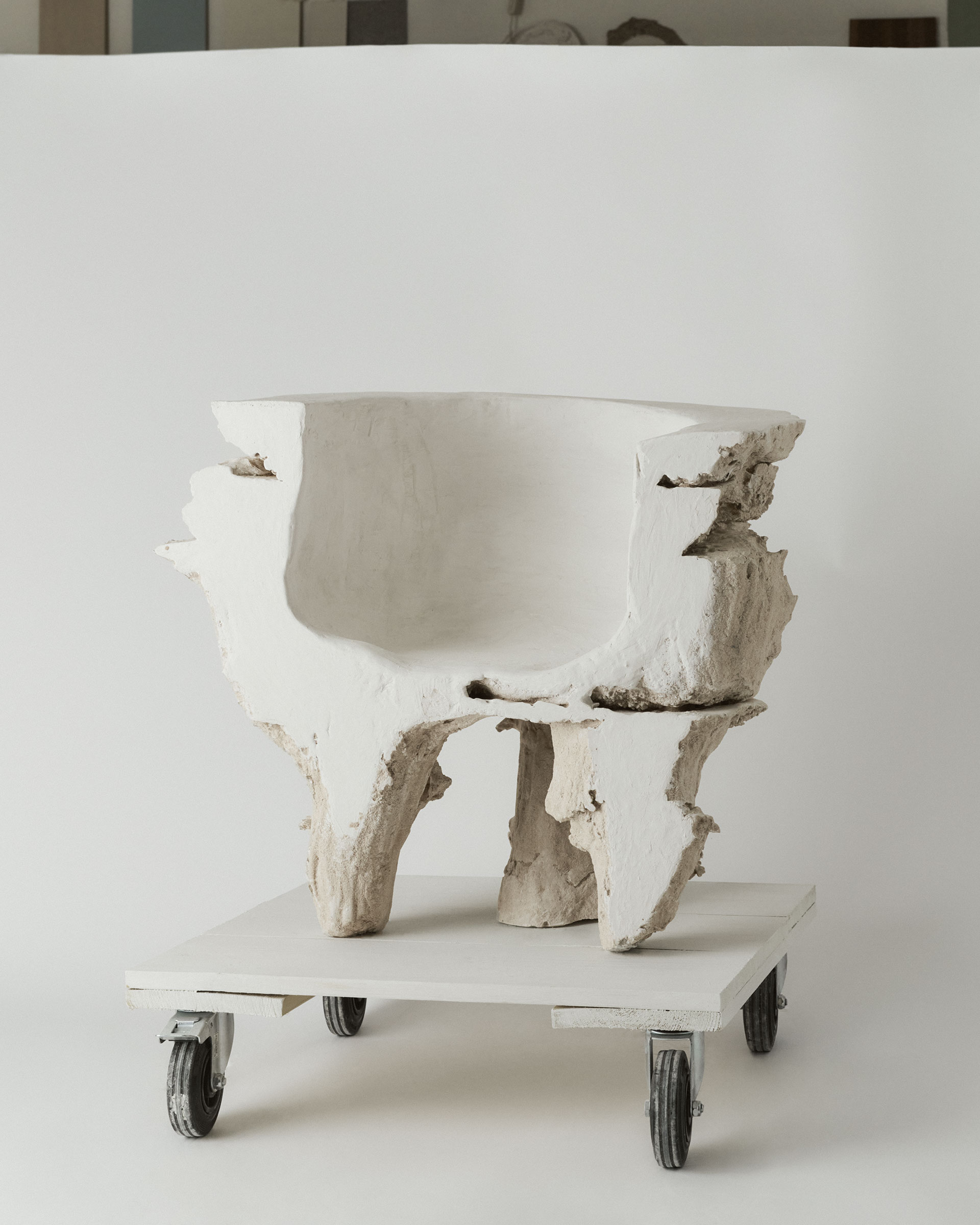
Works by Kajsa Melchior were featured at Älvsjö Gård exhibition. Photography © Stockholm Furniture Fair, 2024.
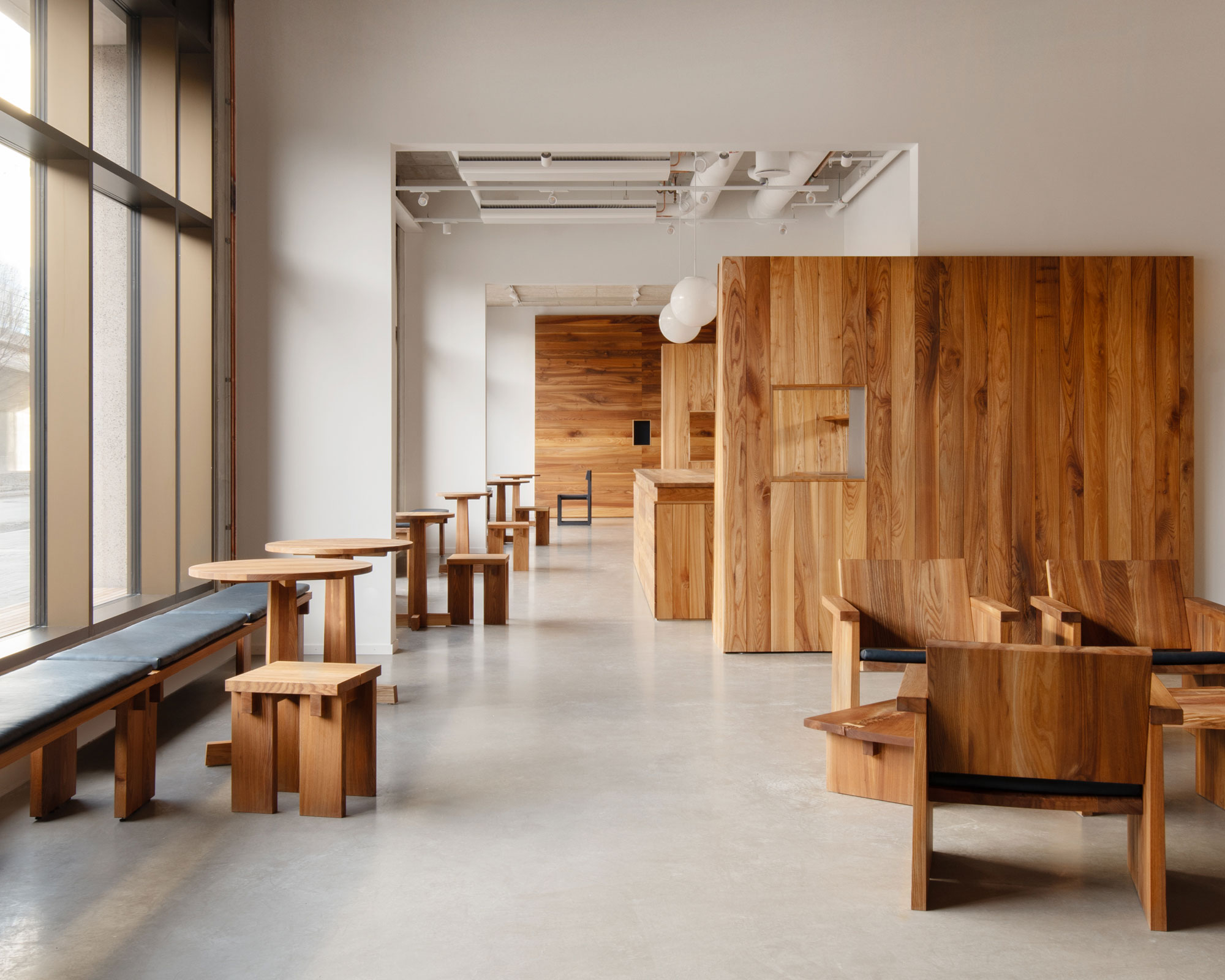
"A. COLLECTION" by CONTEM. Photo by Mikael Olsson.
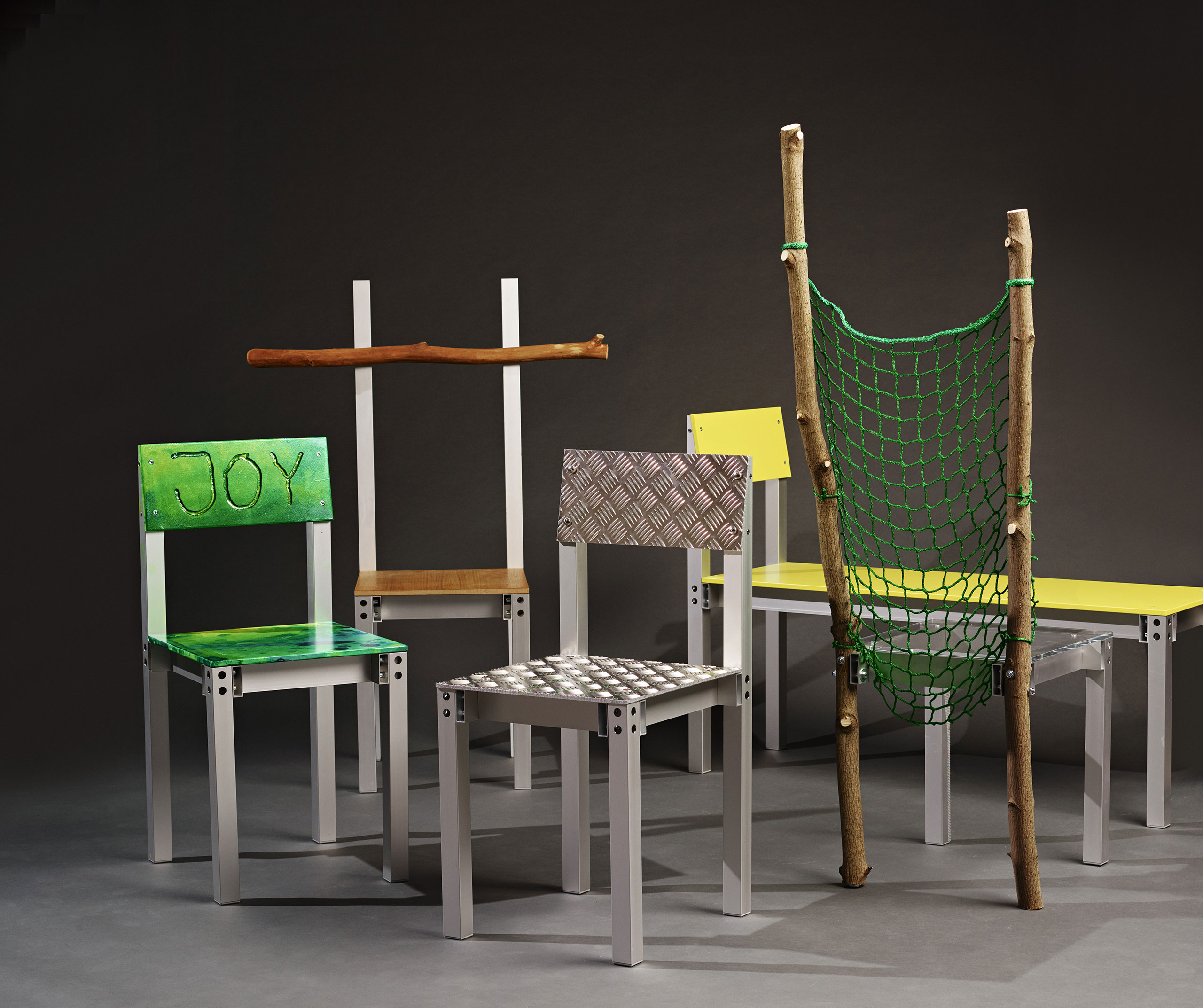
Bukowskis and designer Fredrik Paulsen hosted the exclusive FOUNDATION OF JOY auction at Stockholm Design Week, showcasing 33 objects created in 33 days. Photogtaphy © Bukowskis, FOUNDATION OF JOY.
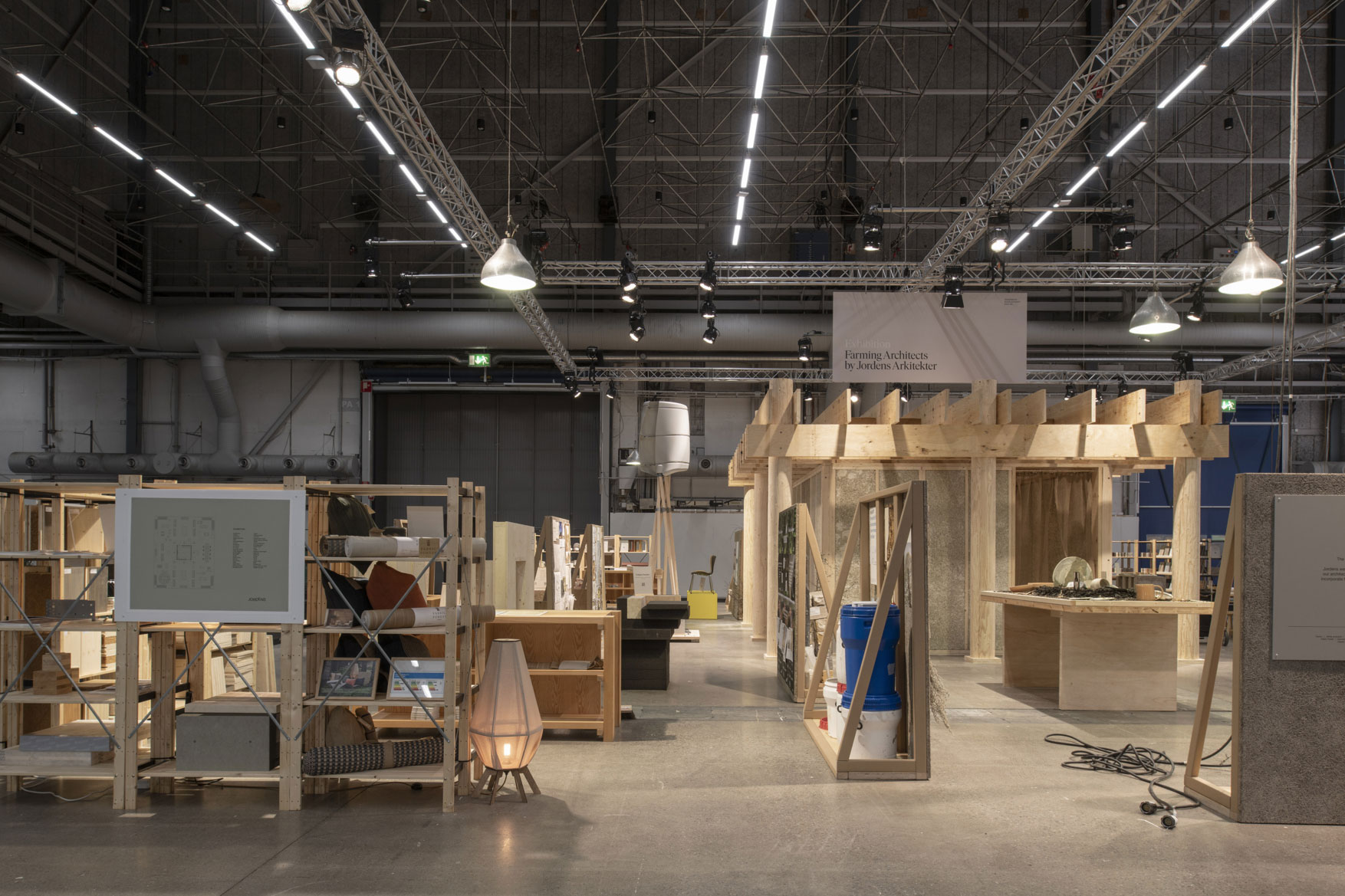
At the Stockholm Furniture Fair 2024, the architecture studio Jordens Arkitekter presented 'Farming Architects,' an immersive exhibition that offered a glimpse into the future of construction. It showcased how sustainable architecture could integrate with ecology and agriculture. Photo by Andy Liffner.
At Jordens Arkitekter’s immersive exhibition “Farming Architects”, utopia becomes a reality: taking over the firm’s 300 square metre pavilion, the installation looks into the future of construction with five forward-facing projects that demonstrate “how agriculture and sustainable architecture are two complementary design practices”.
Conceived as a space for exploration and learning, the exhibition presents new materials, novel construction methods and living concepts, including an affordable and environmentally sustainable prefabricated house model.
Speaking about her curatorial approach, Hanna says she envisions an event that is agile in size and rich in content. “I would like this fair to become a meeting point for a community of architects, planners, and designers reflecting on new ways of living. The home I want to showcase is Swedish, it's Nordic, it connects with nature, and it's designed for millennials. I believe we are on the cusp of a new Scandinavian renaissance”.
"The next step for the industry? It hinges on drawing strength from our community to navigate the world successfully. We're not after the fleeting 'wow' of fireworks”, as Hanna Nova Beatrice puts it, “nor are we yearning for a return to the past. Instead, we seek a slower pace of life, one punctuated by moments of listening”. So, let's start again from the beginning.
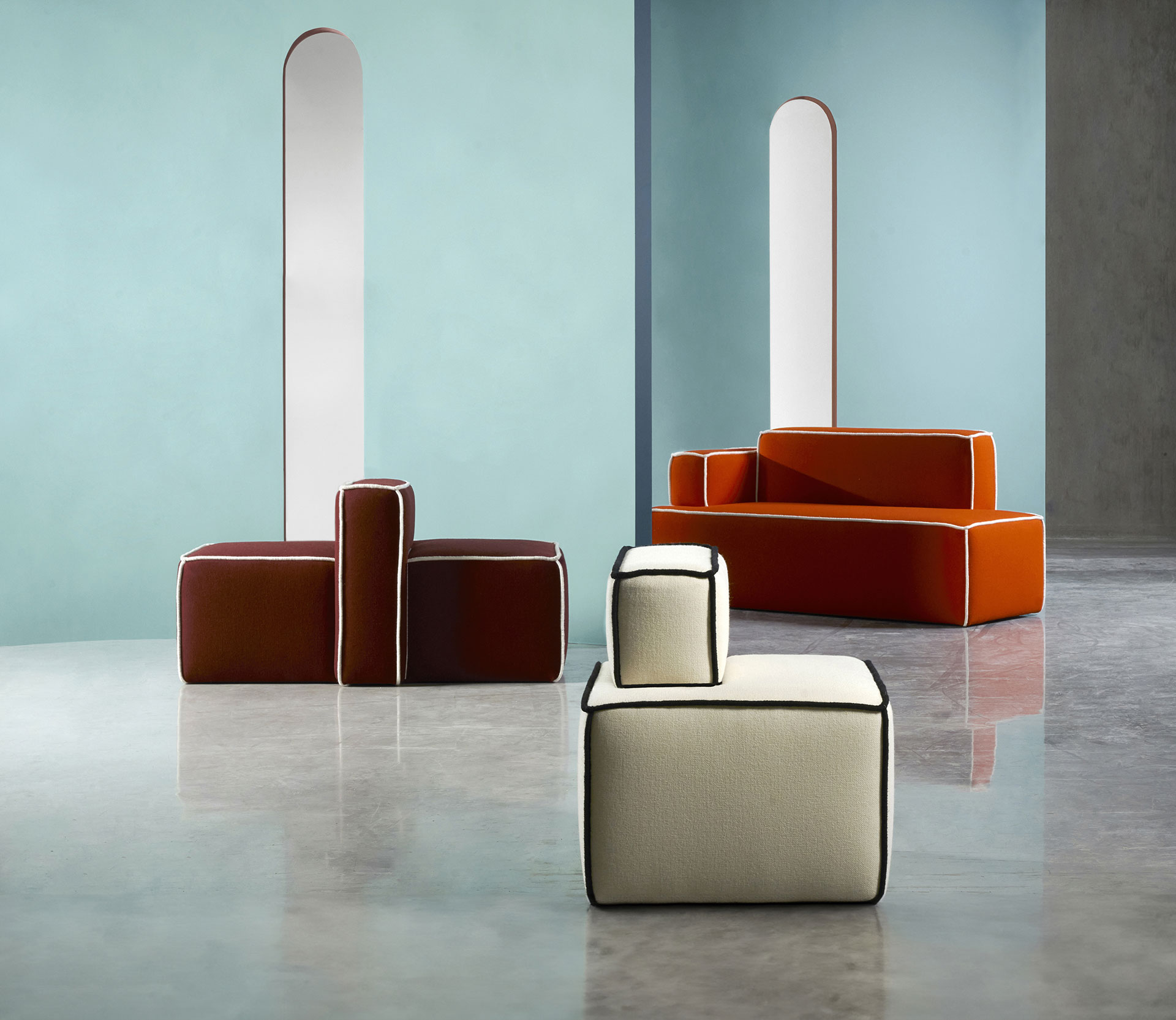
The Thread modular sofa series by Färg & Blanche for Johanson.
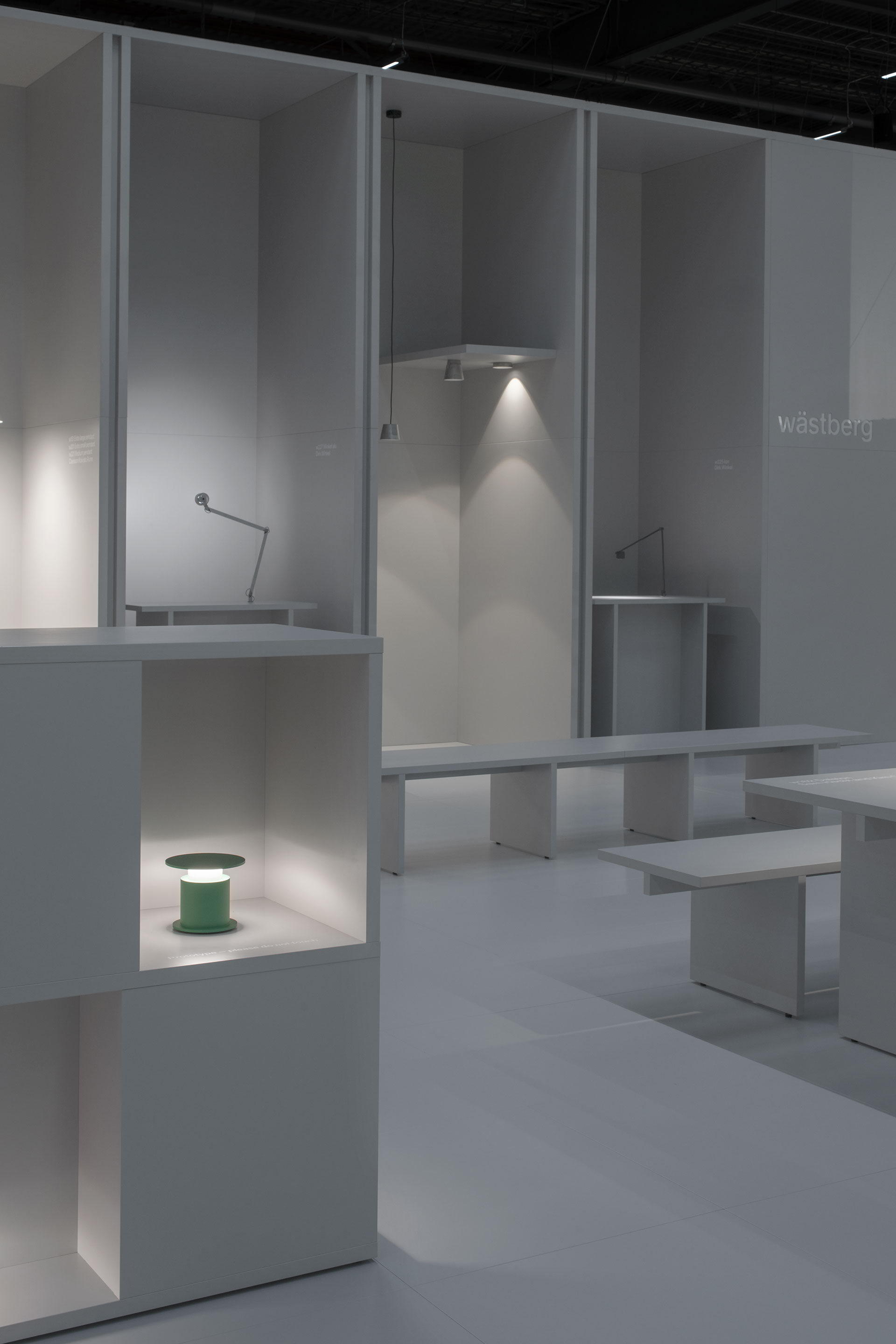
The green battery lamp Faro by David Chipperfield for Wästberg. Installation view at Stockholm Furniture Fair 2024.
I would like this fair to become a meeting point for a community of architects, planners, and designers reflecting on new ways of living. The home I want to showcase is Swedish, it's Nordic, it connects with nature, and it's designed for millennials. I believe we are on the cusp of a new Scandinavian renaissance.

In the exhibition The Ultimate Dandy at Nordiska Galleriet Archives, three leopard-patterned DANDY sofas were presented in a room curated by Massproductions, Nordiska Galleriet and the artists Niklas Blomkvist and Truls Mårtensson.
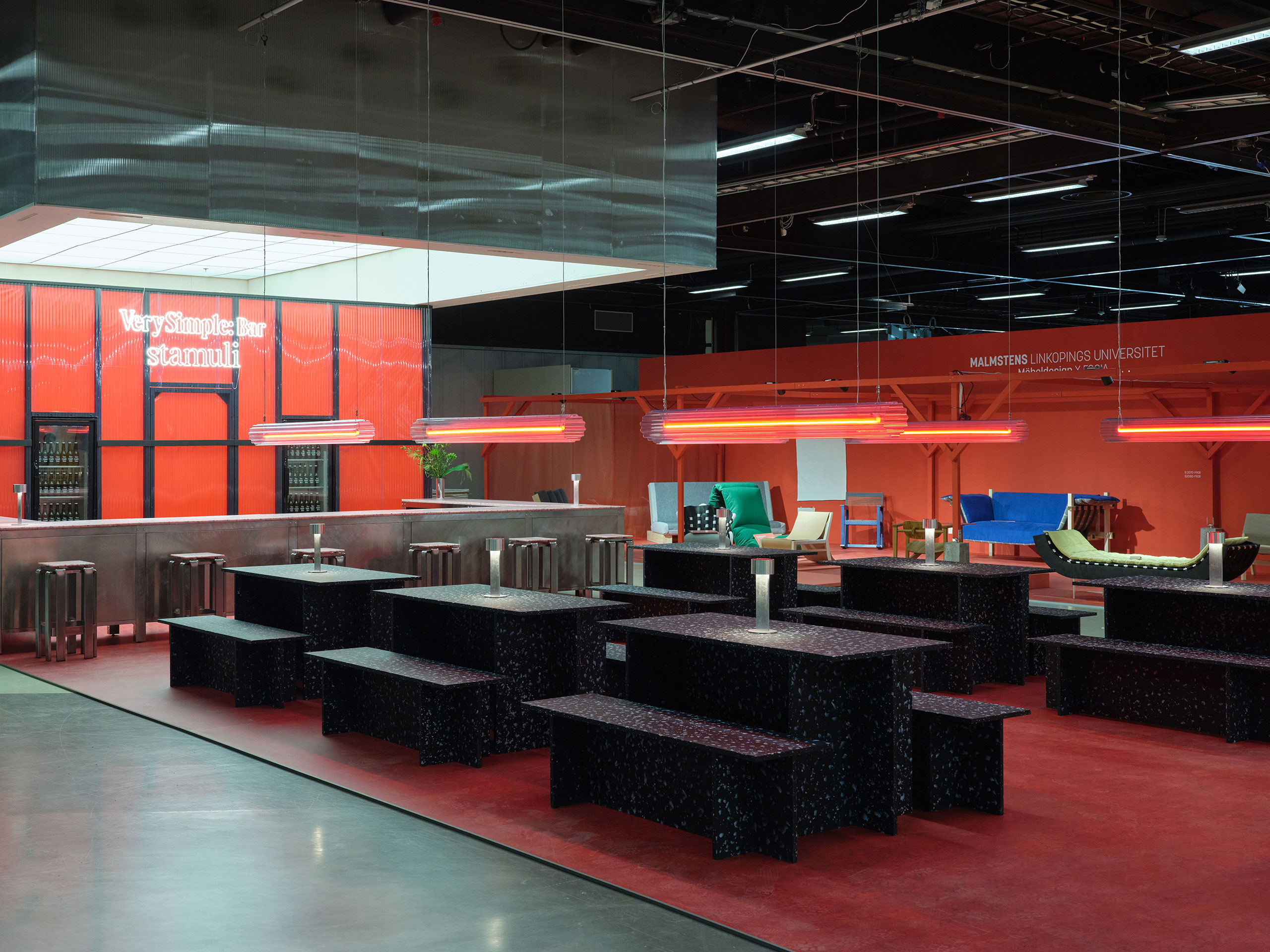
Stamuli Greenhouse Bar area at Stockholm Furniture Fair 2024 in collaboration with Very Simple:Kitchen. Photo © Francesco Stelitano.
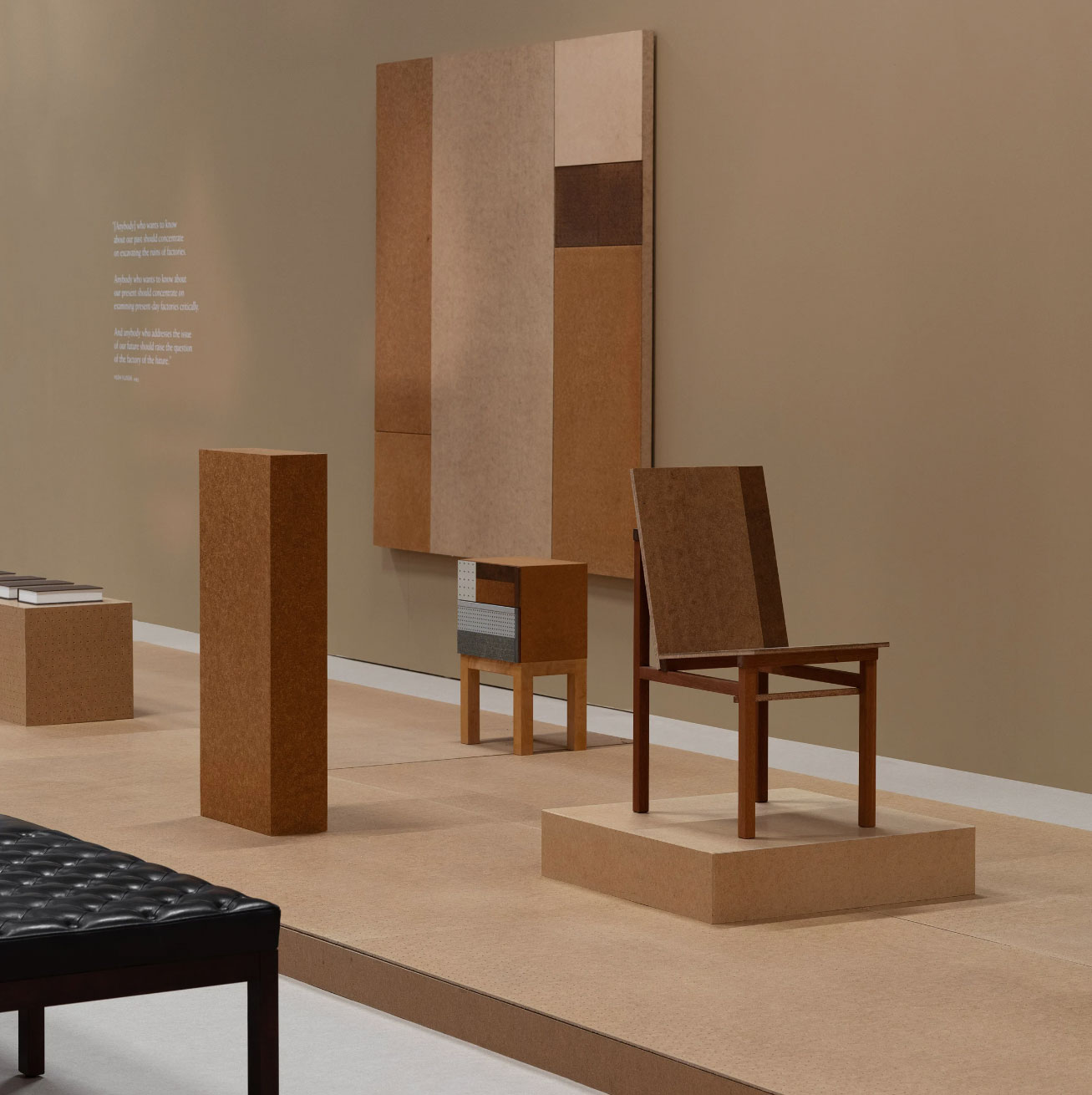
Installation view of The Folkform Museum of Masonite at Stockholm Furniture Fair 2024. Photo by Erik Lefvander.
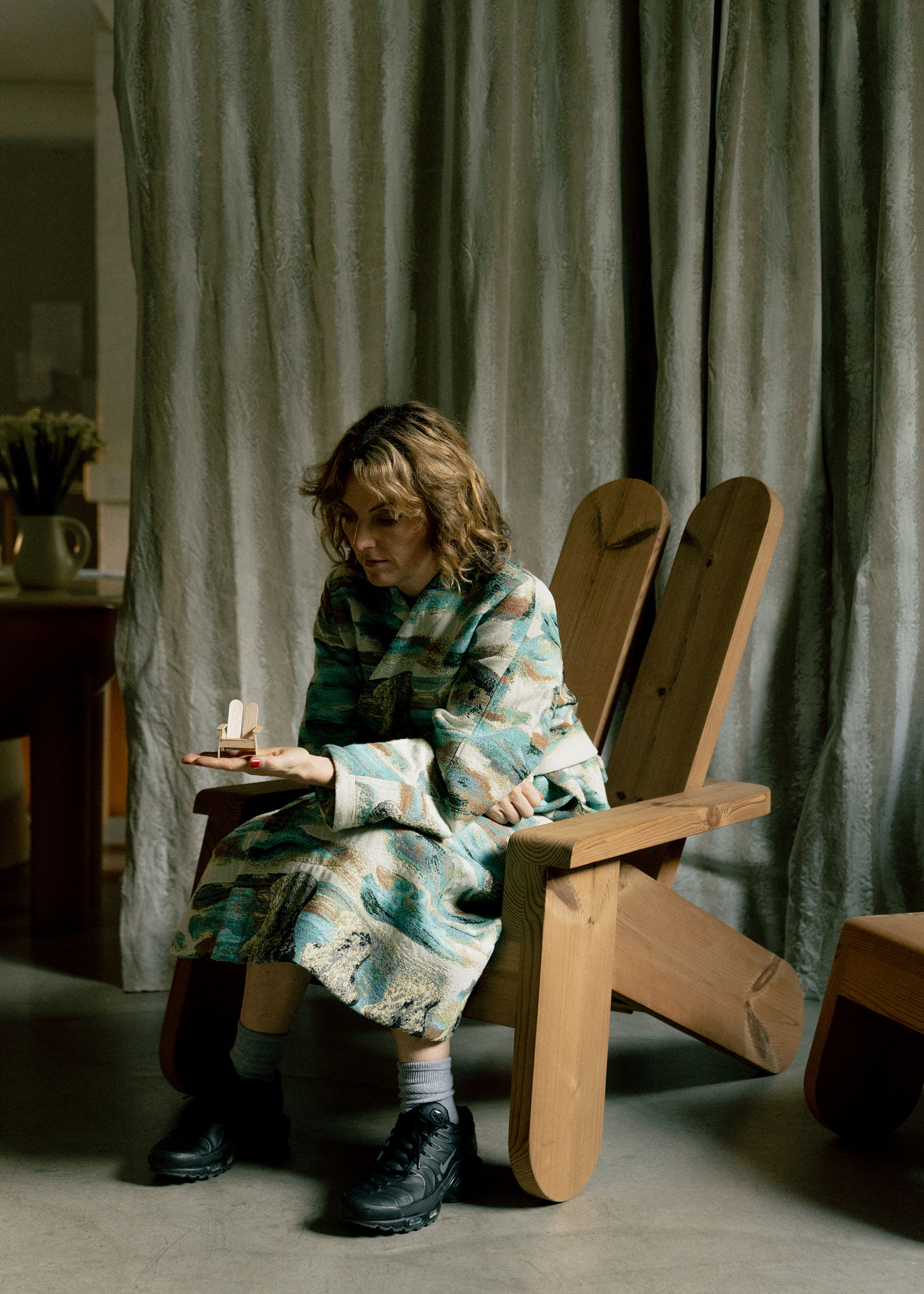
Peace (Finnish Pine) by Faye Toogood for Vaarnii.
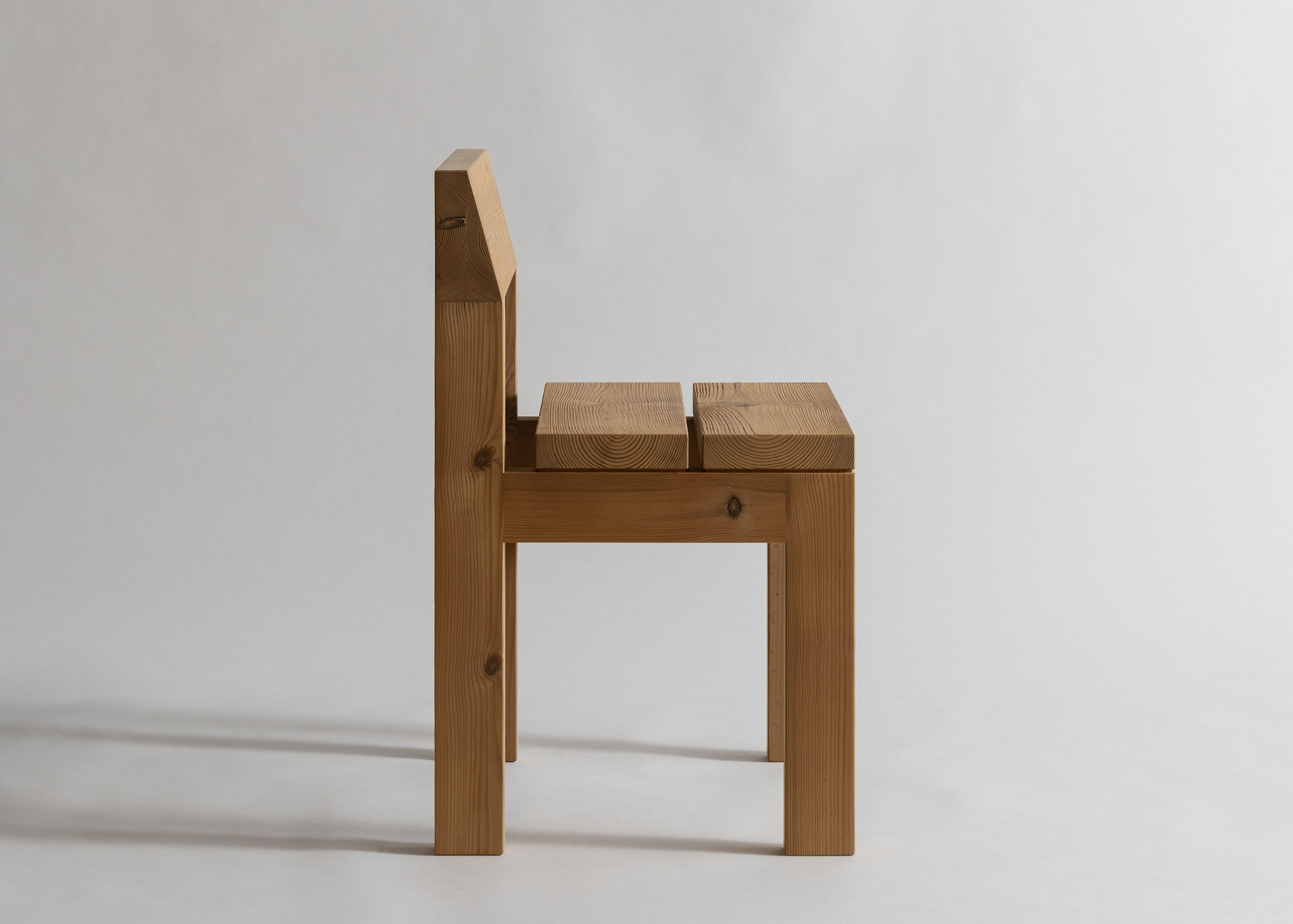
Osa Outdoor Dining Chair by Henrik Tjaerby for Vaarnii.
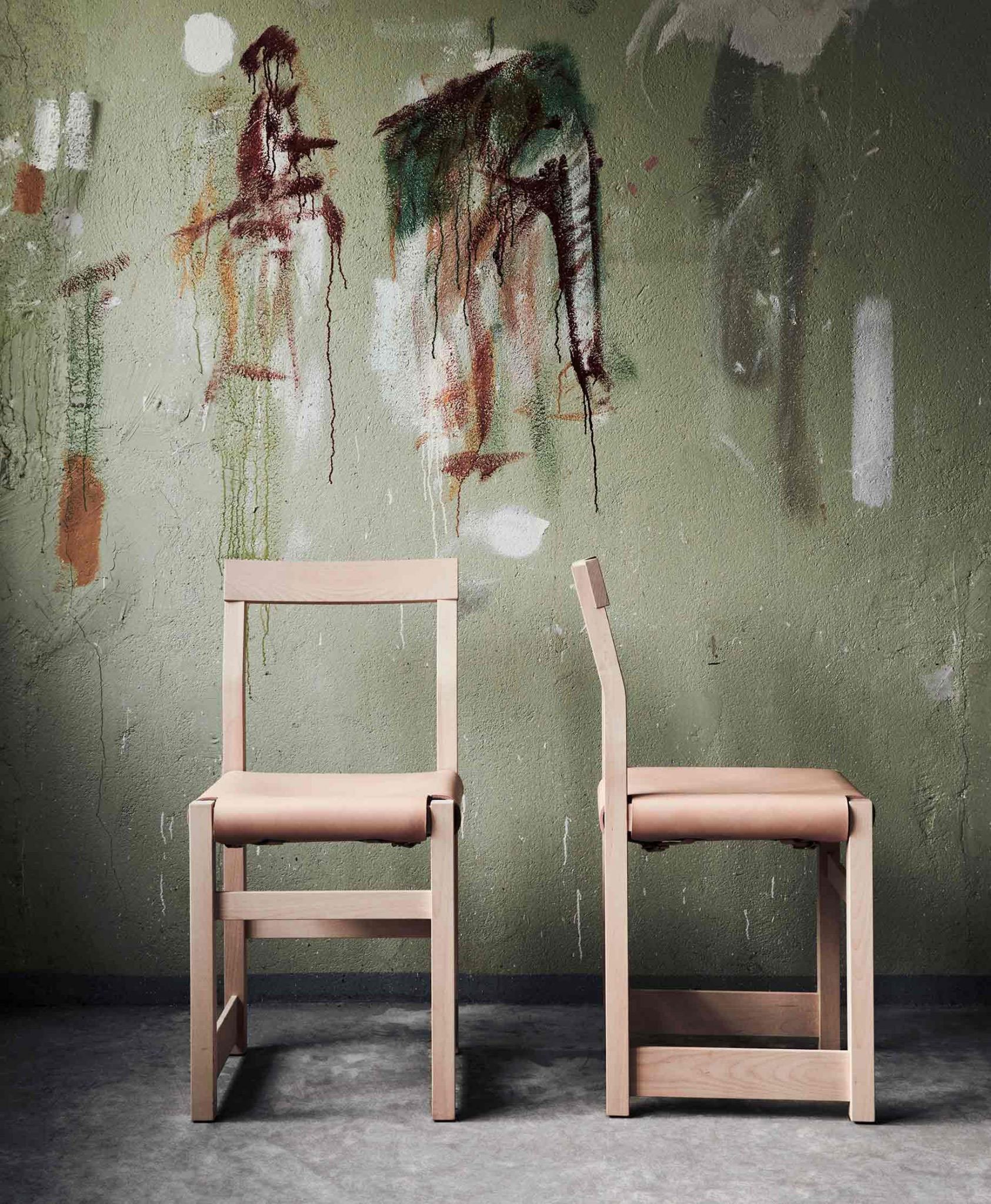
CHAIR V.DE.01 by David Ericsson for Verk.
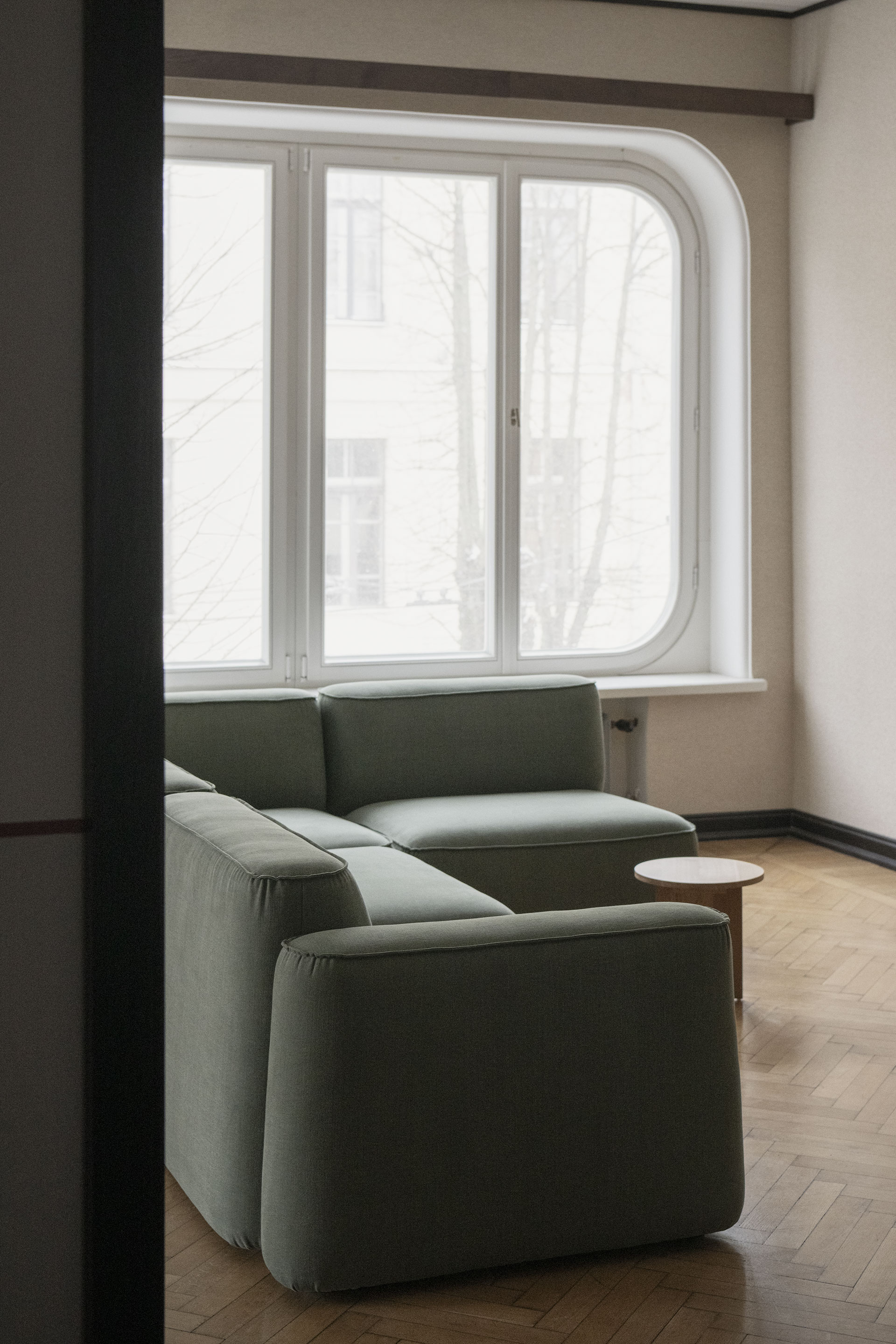
Patch is a new modular sofa system designed by Chris Martin for Massproductions.
___________________
About our guest contributor Paola Carimati
Architect by training, journalist by profession, she has been intertwining research with design and current affairs since the time of graduation at the Politecnico di Milano. Writing is a practice matured and trained in the field: yesterday, in the editorial staff of Elle Decor Italia, today with important Italian magazines of the groups Editoriale Domus, Il Salone del Mobile, Mondadori and Rcs.






